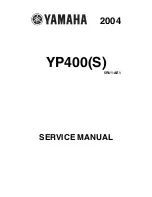
-33-
Storage of the PaceSaver
Short Term and Overnight Storage
When ending PaceSaver’s use for the day, if the batteries do not need charging, simply
turn the key OFF and remove it. The next morning, put the key in, get in, lock the seat, turn
key ON and you are ready to go again. Should you leave the key on, the Battery Saver circuit
shuts the system down after 20 to 30 minutes. To reactivate the unit, turn the key off, then
back on.
Long Term Storage
When the
PaceSaver
will not be used for an extended period of time, there are sev-
eral things you should do to help maintain its proper working condition.
The PaceSaver and its battteries should only be stored in a dry environment with
moderate termperatures. Long term exposure to excessive hot or cold termperatures will
be harmful to the life of the batteries. The batteries must be fully charged before they are
stored. They should remain connected to the PaceSaver charger for storage up to 6 months.
Be sure that AC power remain's connected. If longer than 6 months the batteries should be
exercised through a discharge/recharge cycle every one to two months.
Maintaining the PaceSaver
In general, The
PaceSaver
is very easy to maintain. Consult your dealer if any repairs,
adjustments, or damaged part replacements are needed.
Routine Maintenance
Daily
- Charge the batteries as described in the “Scooter Batteries” section of this manual.
Weekly
- Check the tire pressure for proper infl ation. See the proper specifi cations for your scooter.
- Clean the
PaceSaver
using a damp cloth with a mild soap. Use a minimal amount of water.
Do not allow electrical components to get wet. Wipe dry.
Monthly
- Look the
PaceSaver
over in general making sure all the bolts and
nuts are still tight.
- Inspect the battery wiring and motor connections for wear,
damage, and that proper connections are made.
- Lubricate the top edge only of the seatpost tube with a light grease
(See FIGURE 12).
FIGURE 12














































